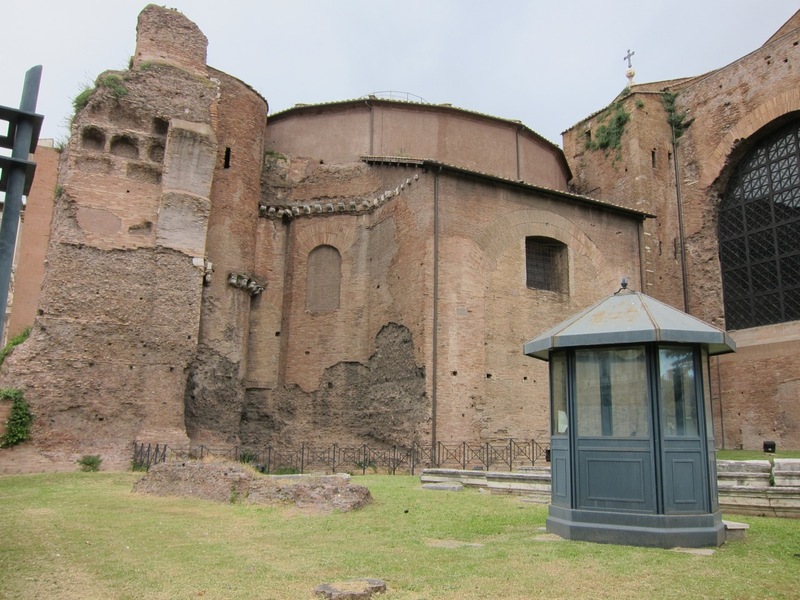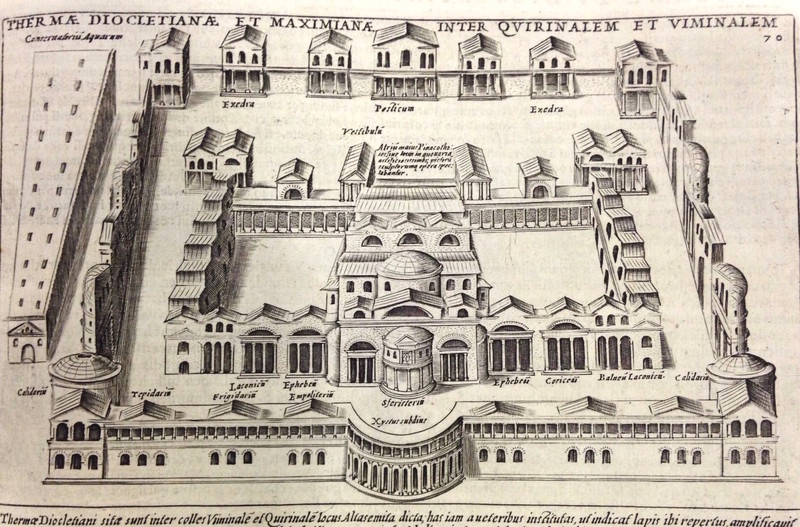Construction and Layout

View of surviving exterior materials on the Baths of Diocletian.

Lauro's engraving of the Baths of Diocletian (Wellesley Special Collections).
Architects prioritized techniques that would amplify a grand sense of space. The bathing rooms had very high, vaulted ceilings and grand columns, with series of alcoves that made the space seem to extend indefinitely. Technologically advanced external buttresses provided support for the vaulted ceiling of the frigidarium. The main bathing rooms were built on a massive platform, surrounded by gardens and an outer margin of auxiliary buildings. The Baths of Diocletian are constructed mostly of brick, but stucco on outer surfaces gave the impression of stonework.
The flow between open spaces, both outdoors and indoors, was essential to both the logistics of the bathing experience and to the sensation of abundant, pleasant spaces.
For overall layout and for specific construction techniques, the Baths of Diocletian relied upon established ideas of a Roman bath complex. The Baths of Caracalla (completed 216 CE) were the most important predecessor to the Baths of Diocletian; until the construction of the Baths of Diocletian, the Baths of Caracalla were the grandest Roman baths ever built. Like the Baths of Trajan and Caracalla, the Baths of Diocletian placed grand bathing rooms at the center, with a surrounding margin of pavilions and facilities secondary to the main bathing experience (libraries, changing rooms, offices, and other rooms).1 These bath complexes also have in common symmetry across the entire layout and a grand and ambitious scale.
___________
1. Amanda Claridge, Rome (Oxford: Oxford University Press, 1998), 393.